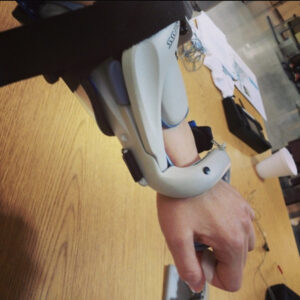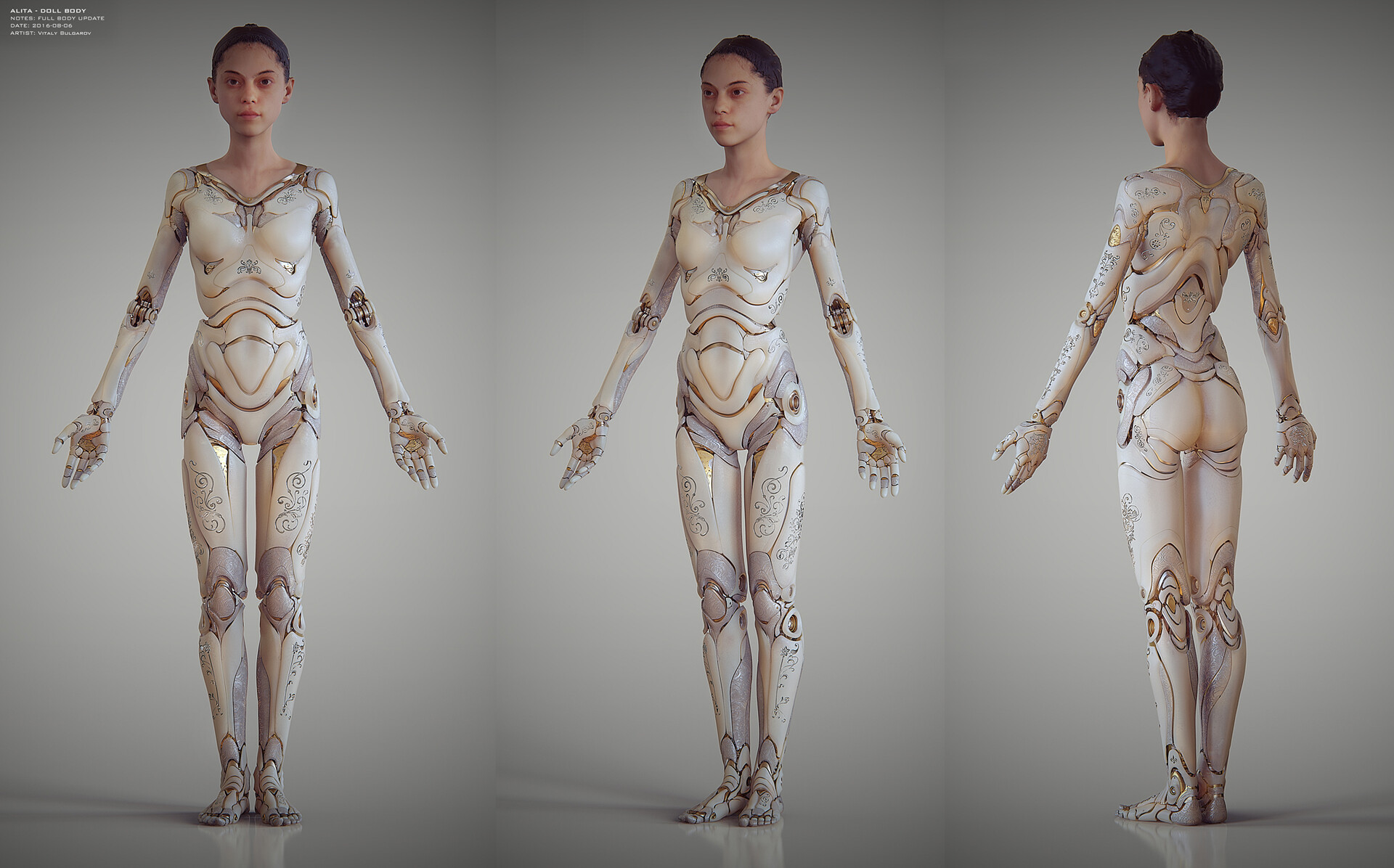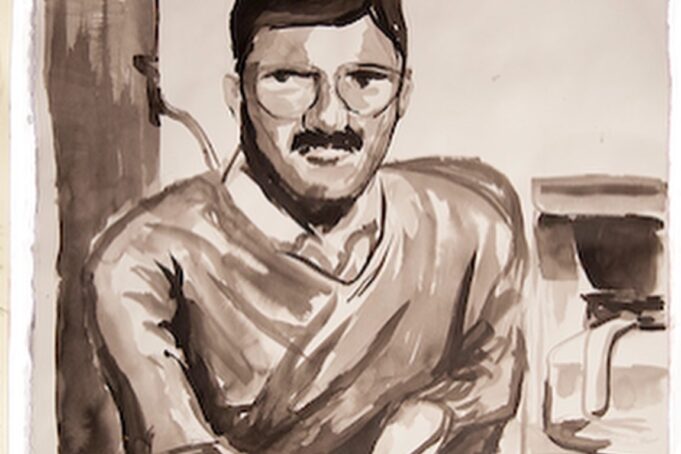My daughter has type 1 diabetes. To keep her alive we use a few wearable devices embedded in her body to sense her blood glucose and add the insulin her pancreas no longer produces.
Here are some of the things I am learning about technology design in general from my daughter’s journey into becoming a real-live cyborg.
1. INTERFACES MATTER MORE THAN ALMOST ANY OTHER SURFACE OF A DESIGN.
Where the hardware touches or penetrates your body is exponentially more important in its ability to enhance or ruin your experience than the parts that don’t. Infusion sets and their adhesives matter more than the form and industrial design of a pump. Think about how the quality of experience in smartphones went up when you were touching glass rather than plastic membranes.
2. THE MORE ELEMENTAL AND GEOMETRIC SIMPLICITY A DESIGN HAS THE LESS OBVIOUS PEOPLE CAN ASSUME ABOUT WHAT IT’S FOR.

The Libre sensor is a small white circle with a tiny bit of adhesive peeking out around the edges. It could be a nicotine patch. It could be a piercing spacer plug. It could be some biometric bitcoin wallet. Medtech has an aesthetic of rounded grey plastic that says “grey, safe, hospital railing.

You can see that aesthetic on display here in a piece of occupational therapy equipment my friend Pam used after her stroke.

You can see it replicated here in the CGM my daughter wears.
When things like the Libre or the Tandem t-slim pump that looks like the little brother of the first gen iPhone subvert that aesthetic they grant their users the ability to have them mistaken for something else and thus empower them to decide when they reveal their diabetes or not.
3. YOUR BODY DOESN’T WANT TO BE MODIFIED PERMANENTLY.
It will eventually encapsulate anything that penetrates the skin. The most successful technological adaptations, glasses, fillings, piercings, bone amplified hearing aids, find ways to avoid crossing that barrier or work within it because the body will fight you forever. This is part of why I think our largest organ of sensory input, skin, is underutilized in technology design. The best designs are reversible or better, work with the body’s natural tendencies and mechanics to make a composition together.
4. INTEROPERABILITY AND MODIFICATION ARE HUMAN RIGHTS.
I don’t risk violating intellectual property law when I tailor my pants to fit my legs or when I combine Uniqlo jeans with a J.Crew jacket. Just kidding. I can’t afford J. Crew. Similarly, I don’t hang to worry if the bluetooth headphones I buy at the airport because I forgot mine at home will work with my tablet. The standard means I can mix and match to meet my needs and they will work. And yet, when people with diabetes wanted to wear a continuous glucose monitor and have their insulin pumps slow down the insulin when they started to go low, they had to do a good bit of reverse engineering to make that work and continue to engage in a bit of cat and mouse with the manufacturers to do so. And we are talking about technology woven into our bodies. At Tidepool.org, we believe that data created by a person’s body is owned by that person regardless of who made the hardware or software that captures it.
5. IF YOU CAN’T MAKE IT BEAUTIFUL, LEAVE IT BLANK.

I love the image of the first cyborg body Alita wears in the recent film, Alita: Battle Angel. It was crafted lovingly by a father for his daughter who was paralyzed to move her brain into and walk again. French curves engraved into every corner speak of love expressed in craft. And yet you would be hard-pressed to find such bespoke hardware in the medtech world. But the skin of the omnipod insulin pump is a translucent white canvas for kids and adults to scrawl messages, paint fingernail polish onto, apply stickers or festive rainbow duct tape. It’s a disposable three-day pump; a digital syringe. Like the old plaster cast left blank for signatures or covered in colored tape, design can leave room for the people who take these pieces of technology into their bodies to express themselves.

They can even come to embody the support of the people who love them in the very physical manifestation of a disease imposing itself upon you. Leaving room for the user to make it their own can reverse of a device from a disruptive symbol of oppression into an expression of power and agency. Your brand is less important than this.
6. THERE ARE ALWAYS COSTS AND BENEFITS TO TAKING ANY NEW TECHNOLOGY INTO YOUR LIFE OR YOUR BODY.
And that calculus should be engaged in critically and with periods of evaluation before one becomes dependent. I wanted to learn how to treat my daughter with multiple daily injections and finger stick blood sugar checks before we learned an insulin pump and continuous glucose monitor. Similarly, I wrote my own criteria of safety and quality of life improvement by which I would judge the success of the DIY artificial pancreas system we tried 6 months after diagnosis. Like the hospital lab that still uses a dot matrix printer because they can’t do without it one day and it still works pretty well, it’s easy to get technologies and processes embedded into our lives and then never ask ourselves if they are still worth it. Insulin pumps have existed for over 60 years but i’ve 75% of Americans with type 1 diabetes still use multiple daily injections. If you ask them why you get s wide variety of answers. Some still valid and others not as the technology advances. This is why the critical analysis needs to be ongoing. I’ve spoken to many people with type 1 who tried a continuous glucose monitor after 30-40 years of living without one to report that it had changed their lives for the better, though in many cases they were reticent to adjust their practice.
7. THE BEST TOOLS DON’T FORCE A PARTICULAR METHOD ONTO A USER, BUT INSTEAD ENABLE FLEXIBILITY, IMPROVISATION AND AGENCY IN THE USER’S PRACTICE.
I’m fond of hand tool woodworking, not because I’m a luddite but because I enjoy practices over purchases. Andy Crouch in his masterful essay, From Purchases to Practices, contrasts the inverse enjoyment curves that purchases and practices have. Purchases are most enjoyable before you have them. Afterward it’s all downhill. Practices, on the other hand, like sharpening a blade or woodworking in general aren’t very enjoyable in the beginning until one has put in the time to build skill, perceptions and judgement that come from experience. Then it starts to get fun. And the enjoyment can keep growing as one develops skill. I can’t say I enjoy diabetes nor have i met anyone else who does. But I can say it is a practice that involved the building of skill. I gravitated towards hand tools for the simple reason that I didn’t have much space. I reasoned that if the old masters could build all the furniture in the world with a small chest of tools then so could I. And that’s because almost every hand tool can be used in different ways. Some uses are more traditional than others but the further you get the more flexibility and improvisation you can find in ways of working. Some tools are highly specialized for one job. But the best tools are flexible enough to be used in a wide variety of ways by different users. They empower the cultivation of skill rather than forcing all users down the same few paths. And make no mistake, the users of the things you design can feel if you trust them with freedom to repurpose them to their own practice or if you have locked them out of the controls. At it’s best it is paternalism. At it’s worst, disrespect.






